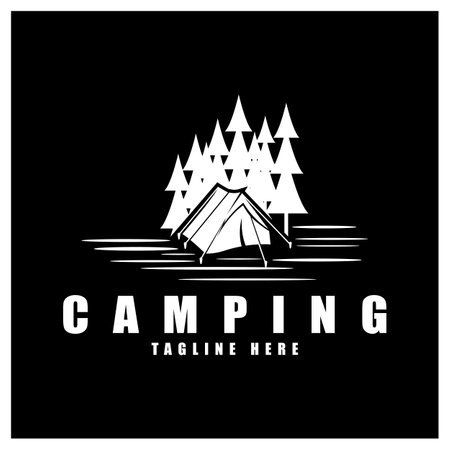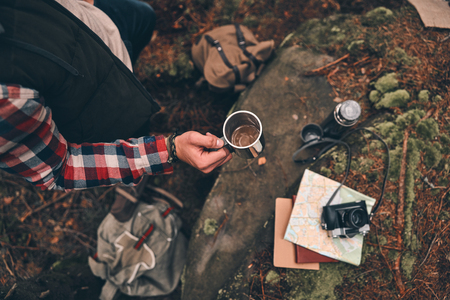Shelter Essentials
When venturing into the wild, shelter is your first line of defense against the unpredictable elements. Whether you’re camping in the misty forests of the Pacific Northwest or braving the arid deserts of the Southwest, having the right shelter is crucial for survival and comfort. A durable tent, designed to withstand wind, rain, or snow, provides reliable protection for most American landscapes. Tarps are a versatile backup—easy to pack and adaptable for quick shade or extra rain cover. For sleeping systems, consider insulated sleeping bags rated for local temperatures and lightweight sleeping pads to ensure warmth and rest on any terrain. With these essentials, you’re prepared to face nature’s challenges wherever your adventure leads.
2. Fire & Cooking Tools
Mastering fire and meal prep is key for every survivalist camper. Reliable fire-starting methods keep you warm and allow you to cook, even in unpredictable weather. Let’s break down the essentials:
Fire-Starting Methods
| Tool | Why It Matters |
|---|---|
| Ferro Rod & Striker | Works when wet, lasts thousands of strikes—dependable in all conditions. |
| Waterproof Matches | Quick ignition; store in a sealed container for rainy days. |
| Lighter (Butane or Plasma) | Instant flame; always pack a backup in case of failure or fuel loss. |
Compact Cookware Essentials
Off-grid cooking requires gear that’s light, durable, and easy to clean. Titanium pots, nesting cookware sets, and collapsible utensils are favorites among American campers. Look for items that serve multiple purposes—a single pot can boil water, cook meals, and be used as a mug.
Safe Meal Preparation Off-Grid
Always set up your cooking area away from your sleeping space to avoid attracting wildlife. Use portable stoves or build a safe fire ring with rocks if local regulations permit. Store food in bear-proof containers and clean up thoroughly after every meal. The right tools make preparing hot coffee at sunrise or soup after sunset simple and safe, letting you connect with nature while staying nourished and secure.

3. Water Safety & Filtration
Clean water is non-negotiable for every survivalist camper. In the wild, streams and lakes may look pristine, but they often harbor bacteria, parasites, and chemicals invisible to the eye. A portable filtration system is your first line of defense. Compact filters like pump-action purifiers or lightweight straw filters remove pathogens and sediment, making them ideal for fast-moving adventures. For added peace of mind, pack purification tablets or a UV light sterilizer—both are small, reliable backups in case your main filter fails or you need to treat larger amounts of water.
Knowing how to source clean water is just as vital as having the right gear. Always look for flowing water over stagnant pools; running streams are less likely to contain harmful microorganisms. If you’re near snow or ice, melt it before drinking—never consume it directly to avoid lowering your core temperature. Avoid collecting water downstream from campsites or animal tracks. With the right tools and knowledge, staying hydrated safely becomes second nature in any backcountry setting.
4. Navigation & Communication
When venturing into the wilderness, knowing your way and staying connected can make all the difference. Whether you’re trekking deep into national forests or exploring remote mountain trails, navigation and communication tools are non-negotiable for any survivalist camper.
Essential Navigation Tools
Relying solely on digital devices isn’t enough. A blend of analog and modern technology is key:
| Tool | Purpose | Why It Matters |
|---|---|---|
| Topographic Map | Visualizes terrain, water sources, and landmarks | No batteries required; always reliable |
| Compass | Determines direction and orientation | Cuts through confusion when electronics fail |
| GPS Device/App | Pinpoints exact location, tracks routes | Fast, accurate, easy to update with maps |
Choosing GPS Options Wisely
While smartphone GPS apps are handy, dedicated GPS units offer longer battery life and better durability in harsh weather. Always download offline maps before heading out—cell service often disappears in remote areas.
Emergency Communication Devices
If you’re off-grid, traditional cell phones may not work. Consider these options for safety:
| Device | Main Use | Benefit |
|---|---|---|
| Satellite Messenger (ex: Garmin inReach) | Send/receive texts anywhere; trigger SOS alerts | Keeps you connected even without cell service |
| Personal Locator Beacon (PLB) | Sends emergency distress signals to search & rescue teams | No subscription needed; highly reliable in life-or-death situations |
| Two-Way Radios (Walkie-Talkies) | Short-range communication with camping partners | Quick coordination on group trips or in dense forests |
The Minimalist Approach: What’s Non-Negotiable?
A map and compass are foundational—never leave them behind. If budget allows, add a satellite messenger for peace of mind. The right navigation and communication gear lets you confidently explore wild places while minimizing risk.
5. First Aid & Personal Safety
Every survivalist camper knows that the wild is unpredictable. Being ready for anything means packing a well-stocked first aid kit. Look for practical kits that cover the basics: bandages, antiseptic wipes, gauze, and adhesive tape. Include tweezers and safety pins for splinters or ticks. Don’t forget essential medications—pain relievers, allergy meds, and any personal prescriptions should have their place in your pack. For peace of mind, add a compact emergency whistle, a signal mirror, and a headlamp with extra batteries. These small tools make a big difference in minor emergencies or when help is needed fast. In the American outdoors, being prepared is more than smart—it’s essential for staying safe and embracing nature with confidence.
6. Multi-Use Tools & Knives
Every survivalist camper understands the true value of a dependable multitool and a sturdy knife. These essentials are more than just gear—they’re extensions of your hands, crafted to meet the unpredictable needs of the outdoors.
Versatility in Your Pocket
Multitools pack a world of solutions into one compact piece. Choose a high-quality multitool with pliers, screwdrivers, scissors, and wire cutters. Whether you’re fixing gear, building a shelter, or tackling an unexpected repair, these tools save time and space while delivering peace of mind.
The Right Knife Matters
A robust fixed-blade or folding knife is indispensable for food prep, splitting kindling, cutting rope, or even self-defense. Look for stainless steel blades with a comfortable grip—reliable through rain, mud, and long days on the trail.
Everyday Uses in Camp Life
From slicing fresh-caught fish to whittling sticks for marshmallows, multitools and knives turn challenges into simple tasks. They support safety—helping you clear brush from your path or carve emergency stakes when needed.
When packing for survivalist camping, think utility over bulk. A quality multitool and knife ensure you’re prepared for repairs, meal prep, protection, and those unexpected moments that define true outdoor living.
7. Preparedness Mindset
Survivalist camping is more than just gear—its a mindset. Adopting a preparedness mindset means choosing quality over quantity, and packing only what you truly need for your journey into the American backcountry. Embrace minimalism: every item in your pack should serve a purpose, keeping your load light and your movement efficient. This approach not only helps you travel farther and faster but also fosters a deeper connection with the wild places you explore.
Being eco-conscious is equally essential. Opt for reusable, durable tools that minimize waste, and always follow Leave No Trace principles. By harmonizing with nature—using local materials when safe, respecting wildlife, and leaving your campsite as you found it—you help preserve these landscapes for future adventurers. Survivalist camping isnt about conquering the wilderness; its about coexisting with it, moving thoughtfully, and prioritizing sustainability every step of the way.

